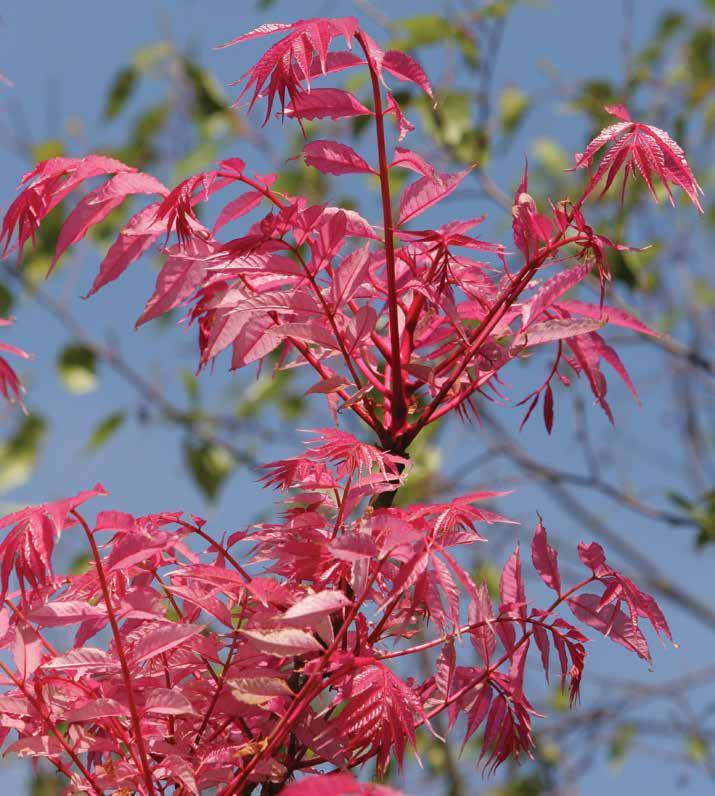

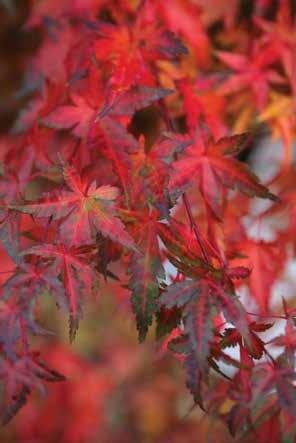

















Never before have trees been thought of so highly.
Governments around the world are turning to trees as the best way of achieving better air quality in cities, as well as providing a much needed mechanism for locking up carbon dioxide that is threatening our planet, with unprecedented climate change in our time.
When thinking of the best trees to plant for the environment, think in terms of their life expectancy. In my local village I have persuaded the Parish Council to plant up the perimeter of our recreational ground with carbon offset trees. As there is plenty of room, I have decided to only plant trees with a life expectancy of over 250 years, such as Acer pseudoplatanus (Sycamore), Carpinus betulus (Hornbeam), Ginkgo biloba (Maidenhair Tree), Sequoiadendron giganteum (Giant Redwood) and Tilia platyphyllos (Broad Leaf Lime). These are the heavy hitters for carbon offset, but every tree has its merit and all do their bit for our environment. I make a conscious effort to pick a different genus of tree each time to future-proof the planting against pest and disease, and I only plant as many as I can look after the following summer in terms of watering.
At Barcham, we are turning over 16 acres of our site to carbon offset gardens to demonstrate best practice. Work for this started in the winter of 2019 and we hope to open to the general public in 2025. The first tree in our feature avenue was planted by His Majesty The King in January 2023. Our site will include a visitor centre for tree consultation and refreshments as well as a children’s play area within the gardens.
Climate change can be looked upon as such an enormous problem, but it is my belief that if everyone pitches in with whatever level of contribution they can muster, then maybe we can usher in some version of a correction.
Trees are such a great way to make this contribution as they don’t offend or hurt others economically. They lock up carbon, release oxygen, and take harmful pollutants out of the air that we breath.
The important thing is that your trees are protected so they can do their job. There is no point planting up a field only for it to be developed down the line and turned into another housing estate. Turn to your local Arboricultural Officer to see if they can be protected by the Tree Preservation Order, or put covenants onto the land to protect the trees to make sure they are still doing their job after you have gone.
 Mike Glover
Mike Glover
Barcham Trees has specialised in the production of containerised trees for 35 years and have supplied over two million trees across the UK.
Our team are highly trained, with many educated to a degree level in arboriculture. We are happy to offer you advice to help bring your vision to life, with a wealth of knowledge regarding species, screening, planting and more.
At Barcham we strive to deliver quality trees that are bound for successful establishment once planted. Behind our stunning trees are our strict policies and environmental commitment. We are proud to say we have achieved Plant Healthy, ISO 45001 and ISO 14001 certification:



We have looked at all levels within our business in terms of environmental aspects and impacts and set ourselves rigorous objectives and targets such as eliminating the need for the use of peat in our growing media, and increasing our recycling levels. We have looked at the business in its entirety, rather than just scope the parts of our operations that we can take an easy win from.
Everyone has been involved and communication within the business has become so much more inclusive. Suggestions for improvement are no longer forgotten with time but are logged instead, and fully discussed each month to assess. We collectively decided that we can do the right thing environmentally for our business and if we choose to take this home to our private lives so much the better.
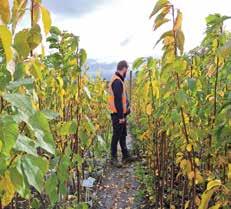
Growers, garden retailers, landscapers and arborists, together we can help protect our plants from destructive pests and diseases.
Together, we can be Plant Healthy.
Find out more about our biosecurity practices on the next page.
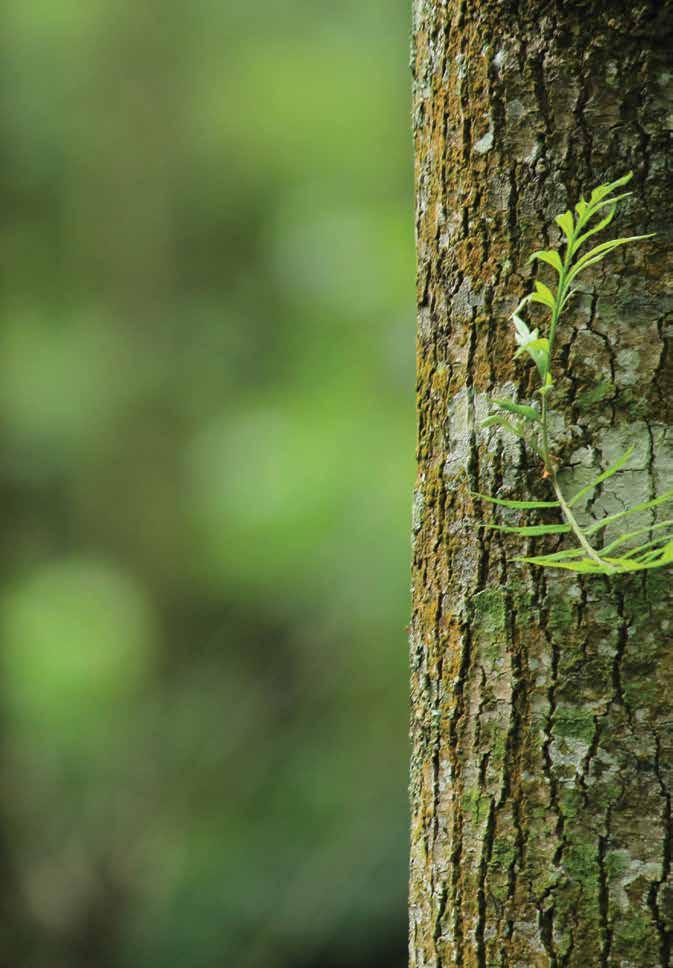
In 2012, we formalised our strict biosecurity policy after it became undeniable that imported trees were responsible for introducing several new pests and pathogens into the UK.
In recent years, the UK’s native Ash trees have faced, and many have succumbed to Chalara Ash Die Back, which has meant this useful tree has not been available to customers as it was before, in an effort to avoid further spread. Many will remember the same happening to our Elm, after Dutch Elm Disease claimed trees across the country changing the face of the landscape considerably.
We do not release any of our new production trees until they’ve had a five month quarantine period, or one full growing season, although many are rooted and ready for despatch before this time. This gives us, and DEFRA, time to complete their inspection cycle. None of these practices are mandatory but instead they are self-imposed by us to ensure biosecure stock.
We also risk assess our range, and take the decision to stop certain lines where the risk of importing a problem is deemed high. In this regard, we do not stock Olive, Bay Laurel or Cork Oak which are all high risk species. We have taken a significant financial hit imposing these practices as many continue to trade stock without regard.
Our biosecurity promise is we will never import trees for resale and planting directly into the UK landscape.
You can read more about our polices and commitment to biosecurity on our website: www.barcham.co.uk
 Ellen Thurman-Carvey Sales Director
Ellen Thurman-Carvey Sales Director
Ellen started with Barcham in 2005 and has accumulated wide ranging knowledge in all things trees and Barcham over the years. She became Sales Director in 2017.
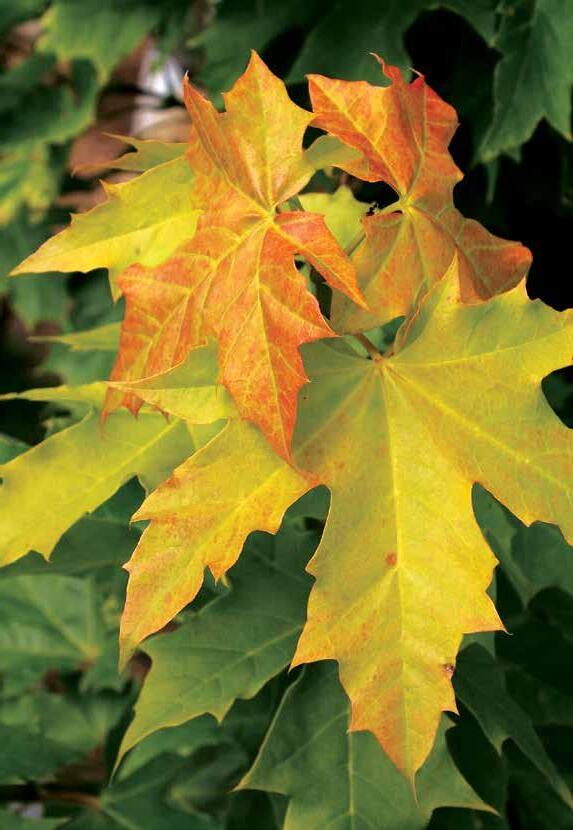
In the spring, Acer platanoides Princeton Gold has a bright yellow leaf, making it stand out a mile against the lush green backdrop of early summer. As the summer progresses the yellow tones down to a much limer green, which sadly one does have to accept as the seasons change. In the autumn time, you can get a red tinge from the leaf which can be quite spectacular, but this isn’t guaranteed each year; depending on weather conditions in the autumn.
In general, yellows make a good accent colour to a planting scheme, tending to draw the eye. Just be careful which other trees you pair them up with, as it is best not to be complementing them with dark colours or purples that have the potential to clash.
The Tulip Tree is notable to me as it is the first tree that made me look harder at the trees around us in the landscape. Upon first starting at Barcham many moons ago, a complete tree novice, I tried to learn trees from our book with earnest. I was fascinated

by the flowers of the Tulip tree in the photos and could not believe that I had not noticed them before in real life.
Otherwise considered understated, the foliage is late to emerge and bright green in colour with the wonderful flowers appearing in June in a typical UK summer. In autumn this tree treats us to a display of butter yellow leaves. It is an elegant and stately tree that makes a wonderful addition to a traditional parkland.

To some this tree has been used too much in the landscape, however I believe this is just a testament to its versatility. For me personally, the ornamental pear appeals to my preference for balance, uniformity and elegance in the shape of a tree.
The flame shape that it offers from its youth through to maturity makes it a perfect candidate for planting enmasse, or as a stand alone specimen.
From a screening perspective, this tree is the first tree into leaf in the spring and the last to lose its leaves in the winter. This extended leaf cover usually means it offers a level of screening through the key months, yet as it is deciduous it offers great value for money for this purpose.

David started with Barcham in 2004, joining us with over 20 years experience from Notcutts. It is safe to say, what David doesn’t know about trees is not worth knowing!

I planted one in my front garden, some 14 years ago when we first moved in, and I am still waiting for its first flowers! I fear I could be waiting a few more.
I have been fortunate to have two well timed visits to Tetbury in recent years and seen mature trees in full splendour. There is no greater sight than the white bracts.
Bit of a nurseryman’s nightmare, seeds can take two years to germinate, are slow to get going, and when you try and prune to shape it does not respond and just sends out new shoots from random branches. Do not be put off however, it is well worth the effort!

This tree should be treated like a ‘dogwood’ (Cornus alba) and should be pruned back hard every 2 or 3 years to get the wonderful new growth of orange stems and slightly darker buds. Looks stunning in the winter in the frost and snow.
I have 2 in my own garden which I have ‘box-head’ pruned to form the feature trees before entering the main grass area.
A recent tree first discovered in Holland as a seedling, propagated from ‘chip-budding’ normally onto cordata rootstocks. Sometimes success rates are limited, and demand always exceeds availability.

This Dawn Redwood was only discovered in the early 1940’s growing in a remote area of China. Although endangered in its natural environment, it has been extensively planted worldwide. There is an astounding avenue of these in China over 60km long, consisting of over one million trees!
Considered a ‘tree huggers’ favourite, when you give the stem (trunk) a squeeze in the spring and summer it feels soft and sponge like. This Metasequoia will happily grow to a giant of a tree, 20m+ and at a good rate. This can be confused in its early years with Taxodium, but can be identified by having opposite paired leaves, whilst the Taxodium have alternate.
 Emma Barker Sales Executive
Emma Barker Sales Executive
Emma started with Barcham in 2017. She has super tree knowledge and is currently studying for a Foundation Degree in Arboriculture and Tree Management.
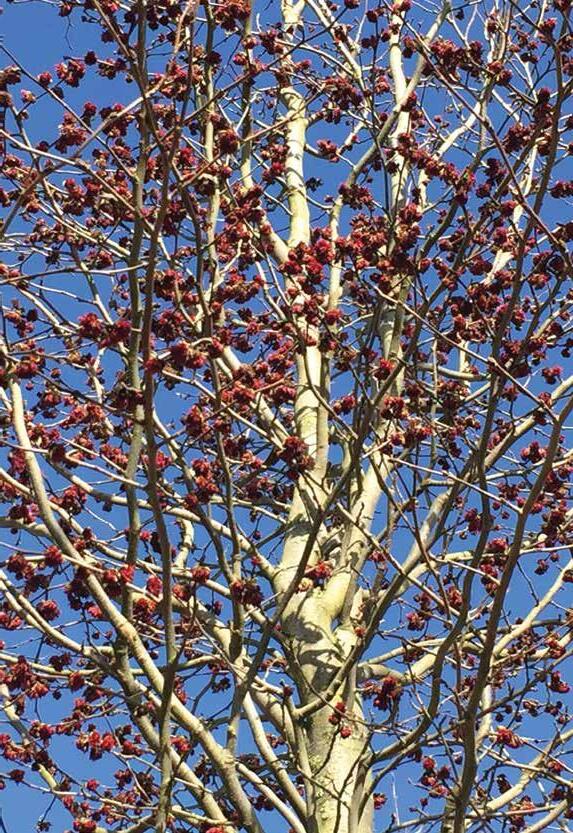
Stunning in winter months! My main reason for choosing Parrotia (and incidentally why I find this tree unique) is for the dark, crimson red flowers they produce. Bursting out of dark velvety, fuzzy buds in winter. They offer interest at a time when most other species are bare. A stunning display of autumn colour, the foliage can range from buttery yellow, to orange and red.
Maturing to approximately 7-12m tall, they are perfect to add seasonal interest to a medium to large sized garden. Parrotia will thrive on most soil types, making it widely suitable for many locations.
Impressive creamy-white flowers can be seen through the summer. These stunning, fragrant flowers are my favourite feature of this tree. They can be as large as 30cm wide!

A dense rounded canopy, the foliage of this tree also offers interest of its own. The glossy, tough, dark green leaves contrast with brown undersides. Originating from warmer climates, they do prefer a more sheltered, sunny position. Reaching approximately 10-12m tall when mature, these specimens are best suited to a medium to large size garden. Great for offering a bit of screening or to add year-round interest.
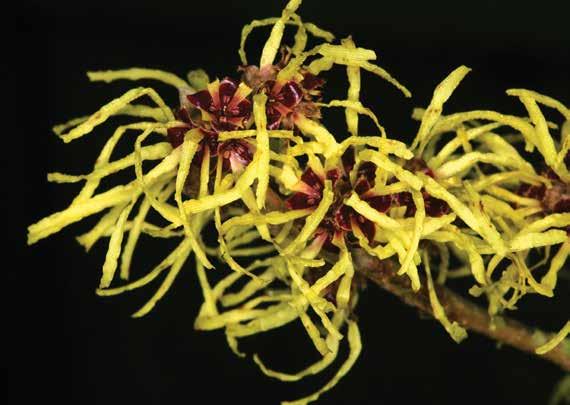
There’s a theme here… I do love autumn colour and unusual flowers. Offering a dense, tidier habit, the ‘Arnold Promise’ trumps Hamamelis x intermedia ‘Jelena’ for me. Bright, buttery yellow flowers appear in the spring.
Untraditional as flowers go, their crinkly petals remind me of lemon peel!
We tend to offer these pretty specimens in multi-stem form. Staying fairly small, they are a great addition to a small garden. A versatile tree, it thrives on most soil types, though it is best to avoid wet ground.
 Jules Baird Sales Executive
Jules Baird Sales Executive
Jules started with Barcham in 2001, and she has a broad and in-depth knowledge of trees. Jules enjoys working with clients to help them achieve the goals for their projects.
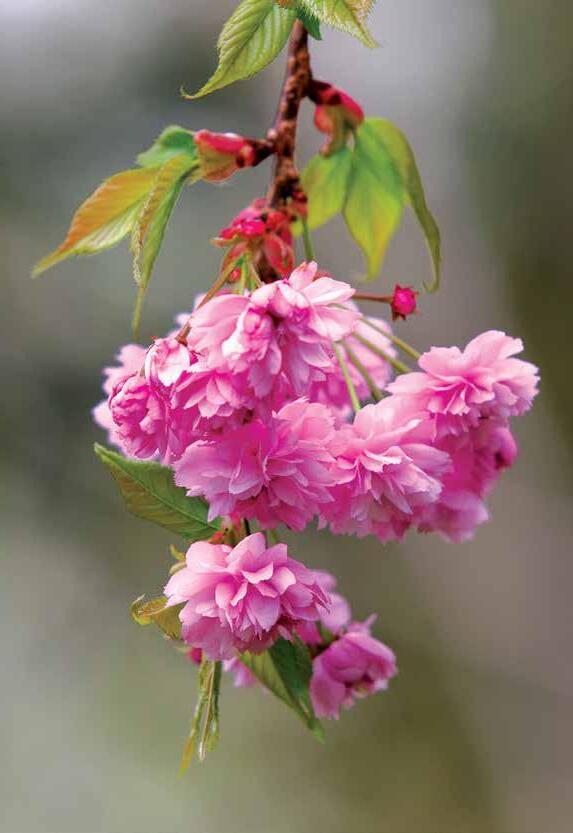
Look at most trees and you will see they all do pretty much the same thing - they all have similar branch structures either straight up, vertical, rounded, or horizontal. Prunus Cheals Weeping thinks outside of the box, I love that! “Let’s be different and beautifully architectural” it screams out! Steeply weeping branches gracefully drop to the ground. In April they are smothered in double pink flowers creating fountains of ‘candy floss’ like blossom attracting all the pollinators to enjoy a feast. Such an easy tree to grow, it does well in all planting locations including smaller gardens but requires a bit of room for best effect. It is best planted as an individual with a 360-degree view. It offers a pleasing shape in winter when the bare branches are exposed and the truly dramatic weeping form can be enjoyed. A small tree of only 3-5m, it does best on free draining soils.
In my opinion, it’s one of the most underused and overlooked small trees in our stock range. The cheery clusters of bright yellow flowers burst through the gloom of late winter heralding spring is around the corner. When under planted with spring bulbs and woodland perennials, it glows gold from the delivers plenty of seasonal interest.

The flowers give way to a mass of bright red cherry like fruits which are edible but probably best left for the birds! Dark green summer leaves characteristically droop beneath the twig when autumn transforms the foliage into an eye-catching deep burgundy. This tremendously versatile little tree can be grown as either a single specimen tree or multi-stem, but for the best effect I think this delightful tree grows happily as a hedge, responding well to pruning. It can be used in smaller gardens or parkland planting. A superb tree for wildlife, especially early emerging bees.

Laburnum x watereri ‘Vossii’ & Laburnocytisus Adamii
Sadly, Laburnum has dropped out of favour recently being identified as poisonous, however this deadly little tree is also drop dead gorgeous! If planted in the correct location and with a little education, Laburnum comes into its own in May when a dazzling display of long golden chains
dripping with bright yellow flowers hang gracefully and elegantly all over the tree. Yes, the display is short lived but a show-stopper none-the-less! Bees will buzz with joy, attracted to the plentiful flowers making this tree a useful addition for all pollinators. Laburnums are very amenable and can be trained and manipulated over arches making a magical tunnel of colour. Caution is recommended however, as the tree’s seeds are toxic and fatal if consumed. Take a look at the cultivar Laburnocytisus Adamii for a riot of colour when in flower. This unusual display of mauve, pink and yellow are deliciously and sweetly combined together on the same tree for a distinct tropical look.
 Louise Hall Sales Executive
Louise Hall Sales Executive
Louise joined Barcham in 2021, initially working with our retail team, before supporting local authority sales. In her short time with us Louise has developed a good knowledge of trees.
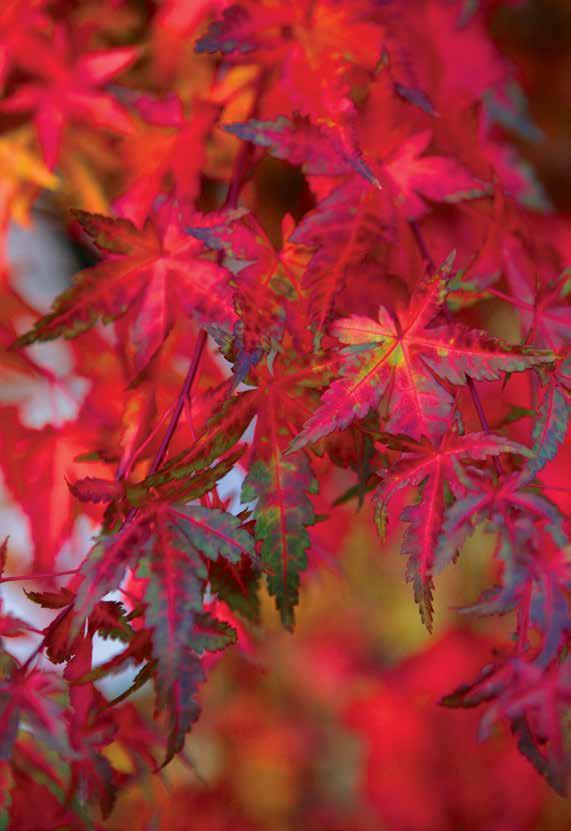
If I asked someone to think of a maple tree, most would automatically think of the Japanese maples with their striking range of colours, forms, and textures. For me, the Acer palmatum Fireglow is an elegant and beautiful tree, with just a touch of drama, much like myself! As soon as the foliage emerges from the breaking buds, spring has officially arrived! Young scarlet red leaves eventually maturing into a deep blood red which makes it perfect for a prominent position in borders – even in winter where its twigs create a reddish-brown glow.
This is an excellent tree for smaller gardens, and will tolerate container planting. It thrives if managed correctly in semi-shade and sheltered areas.
I absolutely love this variety of Prunus as it’s a wonderful addition to a garden that has the space for its wide spreading branches, and for the show-stopping floral display it produces - and what a show!
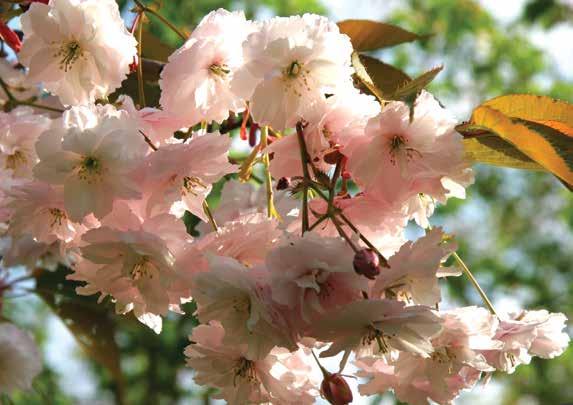
Its stunning blossom is comprised of masses upon masses of delicate pale pink flowers that arrive in late spring from a pink bud, before the rich oranges and reds that are the finale of the season in autumn. This tree is the perfect all-rounder and looks stunning in gardens, verges and avenues. This tree prefers well-drained soil and full sun.

From my experience it seems to be you either love it or hate it… well I think it’s great! A classic garden tree that is durable and versatile, it really has come into its own in recent years as an excellent screening tree.
The new foliage is a striking bright red that will then turn the deep green that you would expect from an evergreen. In the spring it forms clouds of tiny white flowers which look amazing alongside the colour of the foliage. I love its lack of subtlety and the fact it attracts butterflies, moths, and bees. It is recommended to frequently prune, to keep its shape and encourage new foliage in spring.

Francesca Palmer
Sales Executive
Francesca started with the Barcham sales team in 2013. Francesca has excellent tree knowledge and completed her degree in Arboriculture and Urban Forestry, in 2019.

I picked this one largely based on a particular specimen I really like in Kew Gardens! I was drawn to the shape of the tree covered by its heart shaped foliage when I saw it early one April.
Also known as the Candy Floss tree, if you catch it at the right time in early autumn you will note its strong sweet smell which can be likened to caramel – or candy floss!
The tree does also offer some spring interest with its young foliage emerging with coppery-red tones, before hardening to green, followed by vivid yellows, oranges and reds in autumn again. It does need a more sheltered spot however, to avoid the leaf scorching before you get the chance see these colours!

This variety of Magnolia probably isn’t what springs to mind for most - maturing to a modest size and without necessarily the biggest and showiest flower - however each year when I see them bloom on the nursery I can’t help but love them!
The white daisy-like flower which appears in late March/early April, born from cute furry buds, can densely cover its bare branches giving any cherry blossom a run for its money. The young foliage is tinged with red before hardening to a green through the summer. It’s great grown as a multi-stem or single stem tree.

Liquidambar as a species offers a beautiful range of autumn colour from reds to yellows and purples which remind me of a bag of sweets! An excellent choice for interest as winter approaches, this array of colour isn’t the sole reason this is one
of my favourite trees.
From late spring through summer, this species and particularly this cultivar, has a beautiful bright green leaf reminiscent in shape of a maple and which never seems to tire from the stresses of the summer sun! It grows with a pyramidal shape, maturing to a large specimen so is not suitable for small gardens.
 Clyde Seagrave
Sales Executive
Clyde Seagrave
Sales Executive
Clyde has been with the Barcham team since 1998, initially working with stock on the nursery. Clyde has a wealth of tree knowledge and is a regular host for nursery appointments.
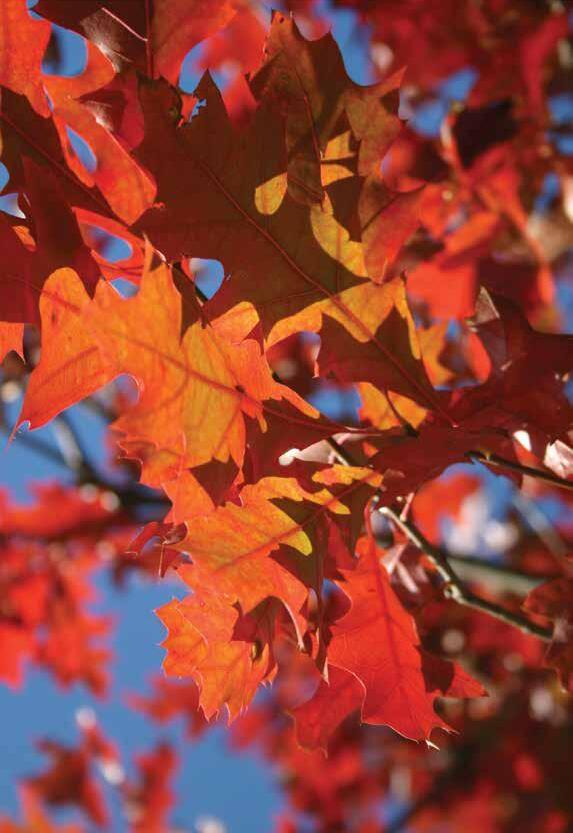
This fast growing large Oak tree has magnificent autumn colour. Bright green deeply cut lobed leaves through the season turning pinkish red and bronze often staying on the tree into winter time.
A pyramidal shaped tree with horizontal branches, it is native of North America and tolerant of wet conditions. In older trees the branches begin to droop, especially at the tips. This variety does produce acorns but usually a more rounded form and less of them. Very similar to the less common Scarlet Oak - Quercus Coccinea. A good tree for large gardens and parklands.

I like this tree because the foliage starts as a bright yellow, slowly turning greener over the summer then fading back to a golden yellow, before the large fern like leaves gradually fade and fall off in the autumn. It is a medium to large sized tree with an open
spreading canopy. This tree does not like wet conditions needing a well drained soil. One disadvantage is it is late to come out but is thornless, unlike it’s parent tree which is native to North America. It is also more reliable than the Golden False Acacia - Robinia pseudoacacia Frisia. Suitable for larger gardens.

One of our more attractive native trees. Small to medium sized, although the canopy can get quite wide and rounded. Fern like leaves are green during the season with clusters of creamy-white flowers in late spring. Small green berries ripen to
orange/red in big clusters which are very popular with the birds. The autumn also provides a great show of colour with all different shades of orange to red. Barcham often grow it in a multi-stem form more commonly than a single stem. Although not edible off the tree you can make Rowan jelly from the fruit. This tree is suitable for larger gardens.

Alex Brufton
Sales Assistant
Alex joined Barcham in 2022, initially in our despatch team, moving into a role with sales in 2023. He is currently studying for a sales apprenticeship whilst learning everything there is to know about trees!
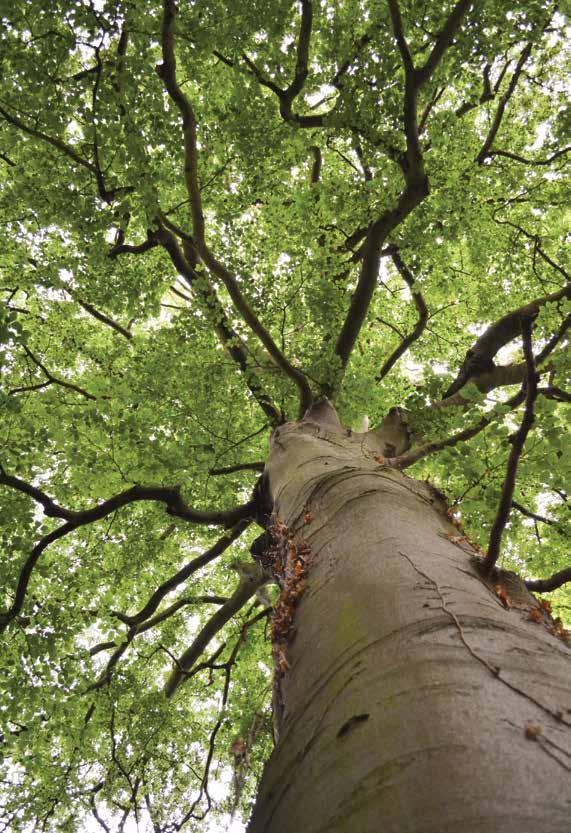
The common Beech tree is often overlooked because of its use for hedging, however, when left to grow to their full potential, Beech become magnificent, large trees and are well worthy of their nickname ’the Queen of British trees’.
As these are such large trees, they are most appropriately used in a parkland settings, with their susceptibility to drought and reflected heat making them unsuitable for urban conditions.
Just last October, I witnessed a mature Beech hidden away near Curbar Edge in the Peak District and was simply taken aback by this native giant, spending a while appreciating its cascading limbs and stunning golden autumn foliage. My two friends and I could not even get our arms around this monster of a tree!
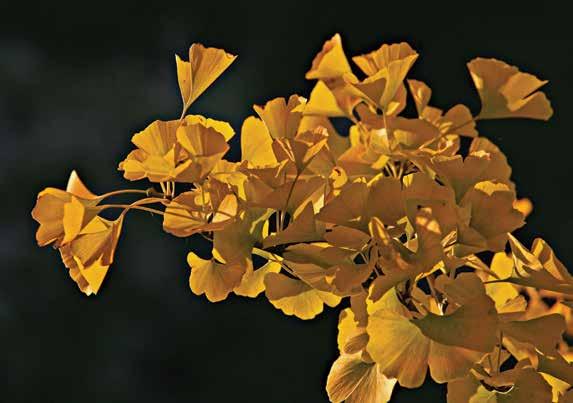
One of the oldest species of tree in the world, it is like no other, having dealt with extinction events and atomic bombs, the Maidenhair tree stands strong. An excellent tree for urban conditions due to their tough nature, these trees can live for over a thousand years, with some specimens in China standing at over 50m tall.
The unique fan shaped foliage that gives a stunning yellow autumnal colour are what thrill me about this tree. The leaves of Ginkgo have a great history of use in Chinese medicine, as when dried, they have multiple medicinal benefits. It does need to be said, however, that the mature females of this species produce a small fruit which when rotten, can smell bad - but this tree does not tend to fruit for at least 20 years.

If you are looking for an interesting and individual tree look no further than this Variegated Box Elder. When I first started at Barcham Trees it was springtime, and this was one of the first trees to catch my eye. New foliage flushes with a stunning pink tinge which later hardens off to a green and white variegated leaf.
Compared to other variegated trees, this has some tolerance to wind and will suffer minimal damage, as such it works very well in open spaces as well as gardens. Heavy clay and soil compaction are no match for this tree, and a resistance to honey fungus can make this a saviour to gardens and spaces affected by it.
 Alex Gilroy Sales Executive
Alex Gilroy Sales Executive
Alex started with our nursery team in 2012, and moved into the sales team from early 2014. Completing his sales apprenticeship in 2021, Alex has detailed and comprehensive knowledge of trees.
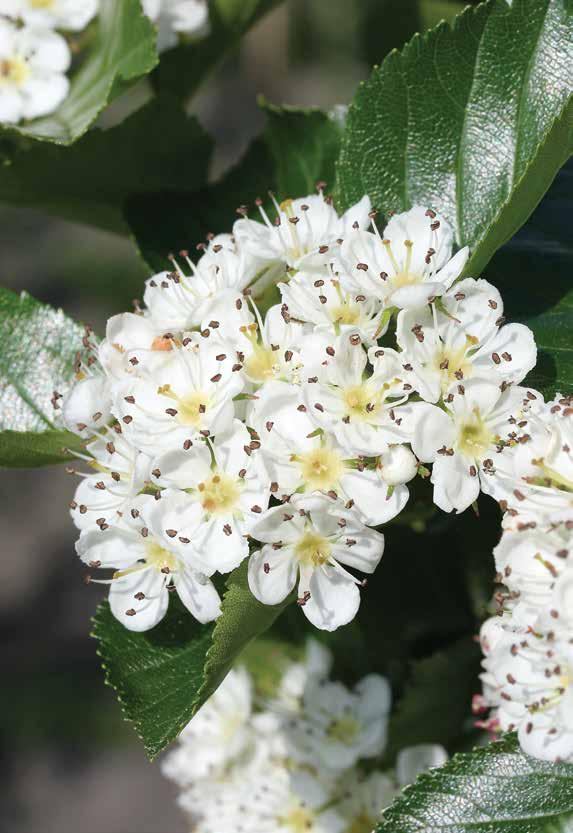
I usually jump to the defense of this tree very quickly once the word “Hawthorn” is mentioned. A customer’s mind will most certainly drift over to a thorny, scruffy hedgerow that we see all over our county lanes and footpaths. Thankfully though, this broad-leaf cockspur thorn only shares similarities in the flower and thorn. Otherwise, that’s where it ends. Crataegus x prunifolia `Splendens’ is a superb garden tree that gives you that allusive, all- year round interest. For me, it starts with the early white summer flower, against its broad, dark green and ovate glossy leaf. Then, once the colder months hit, this is when this tree comes into its own. Reds, yellows and rusty oranges, and even purples can be seen amongst the foliage. As a bonus, this is all backed up by the big, red and plump berries that remain right through the winter months, giving you that extra winter feature!
This is my favorite crab apple, and for good reason. Early spring is where it begins, with its two-tone green and red foliage appearing, readying the stage for trees’ main event - the flower! If you ever have the chance to view Rudolph in full flower here at Barcham Trees, then it’s a real treat. Seeing them in their rows, producing a wall of deep

When you have a desire for autumn colour, then this tree should not be overlooked. Yes, we have some great examples of trees here in our nursery that give you that anticipated autumn colour, but for me, if I require something just that little bit different, then
the Golden Alder is always my go-to. I can always rely on this tree to be the first when opening the door to autumn, with its vivid yellow to golden crown. What really pulls me towards this Alder is its stunning, and very eye-catching pink catkins – which can appear as early as August! So, if you can imagine in your mind’s eye the golden leaf, together with the pink catkins, against a dark heavy mid-October sky, then I’m sure you would agree, this small Alder could easily turn into one of your favourite autumn trees! pink flower really is a sight! That’s not to say you need to plant multiples to create the same wow factor. This punchy little tree is more than capable of catching your eye, even when planted on its own! Also, this surprising tree presents an attractive, ruby-like trunk that continues with the Rudolph theme. However, what doesn’t run with this theme, is the surprising autumn colour. Early November is when you see this tree change personality, with a bright golden yellow leaf, which really contrasts with the rest of year. It is just a great tree packed with ever-changing colour!
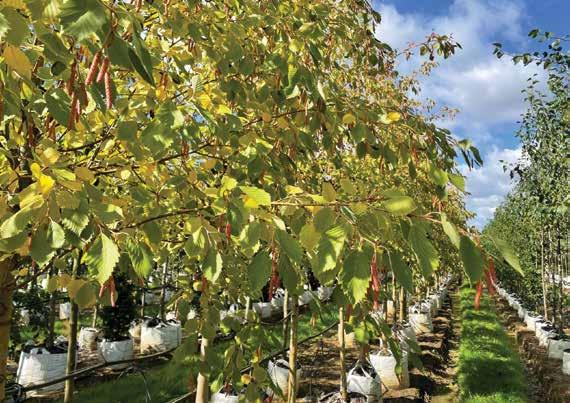
In our modern world, in addition to trees providing interest to our landscape, food and homes for wildlife, as well as their role in our changing climate, they can also have a very practical function. Houses are often built close together and whilst it can be nice to live in a community, we also tend to crave our privacy.
Here are some examples of ways you can use trees to screen:
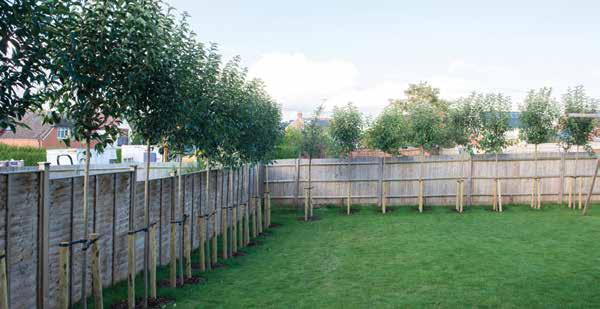
Creating a stilted hedge, using single stemmed ‘lollipop’ trees to form a screen above a fence line or wall is a popular way to add privacy, and offers a dense, instant barrier between your garden and what is beyond.
Commonly used for this: Ligustrum japonicum, Ligustrum lucidum Excelsum Superbum, Photinia Red Robin, Prunus laurocerasus Novita.
If you would like a formal look, you can also use pleached trees to create the effect. Pleached trees are trained on bamboo frames, creating flat panels which can sit above your wall or fence. With this option, a little more maintenance is required to keep the foliage neat and tidy to the frame.
Commonly used for this: Photinia x fraseri Red Robin, Carpinus betulus, Liquidambar styraciflua Worplesdon and Malus varieties.

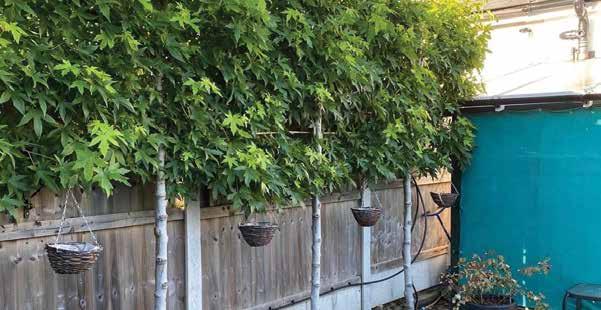
Sometimes, a distraction to detract the eye from what is behind is just as good. Deciduous trees can be planted in a staggered formation to give a lighter screen, still allowing light through the trees canopies depending on your species choice. You can achieve a good visual effect by not planting trees in a straight line and placing them in a ’zig-zag’ formation. Most trees can be used in this way.
Commonly used for this: Betula utilis Jacquemontii, Pyrus calleryana Chanticleer.
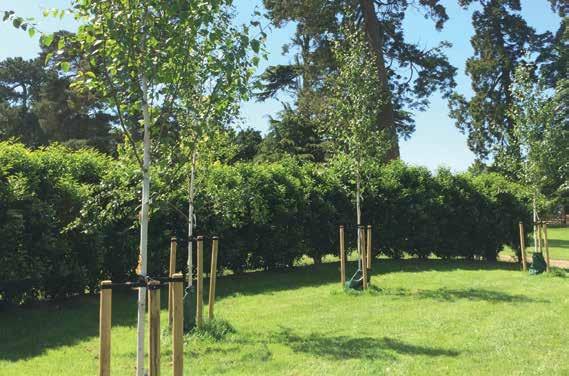
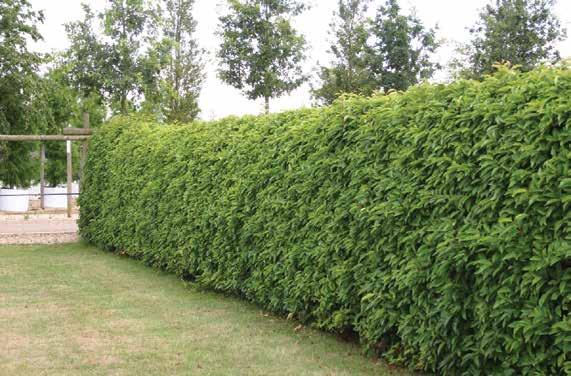
There may not always be an existing wall, fence or hedge in place to offer low level screening. As a result, the foliage may need to start from ground level. Hedges can either be formed of evergreens or deciduous trees and can be managed at a height that suits you.
Commonly used for this: Carpinus betulus, Fagus sylvatica, Ligustrum ovalifolium, Prunus lusitanica, Prunus laurocerasus Rotundifolia, Taxus baccata.
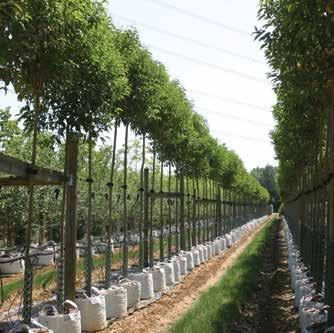
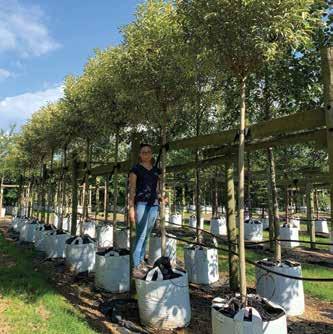
This is one of the most popular screening options, offering an instant impact whilst being the most economical of the evergreen bunch. The Ligustrum, depending on weather conditions, are regarded as a semi-evergreen tree, however in a sheltered and sunny site is unlikely to lose a significant amount of foliage through winter. A good maintenance program is extremely beneficial, ensuring the trees foliage remains thick and full.
For low level screening, the Ligustrum ovalifolium can also be considered which can be supplied as a bush.
Similar to the Ligustrum japonicum, the Excelsum Superbum is a great option if you want something a little brighter for your garden. Its variegated leaves stand out whether the sun is shining or the sky is cloudy.
Pruning is beneficial for this variety to ensure it remains luscious and full.
We also stock this one as a bush which can be used to create a hedge from ground level.
Another prime candidate to use for stilted screening, the Photinia is a fully evergreen option. It’s glossy foliage emerges vibrant red, contrasting with the older foliage on the tree and its surroundings bringing colour to your planting scheme. This red foliage matures to a darker green, but you will see this display each season which is ever more apparent after pruning, which encourages a bright new flush.
The Cherry Laurel is commonly seen as a low level hedge across the landscape, but we also supply cultivars grown as single stemmed trees for a higher level screening solution. The Laurel has a large glossy leaf, and can produce long panicles of white flowers followed by large ‘cherry’ like berries which look inviting but should not be ingested!
A true and robust evergreen, its dark foliage, much smoother than the native Holly, forms a dense and generally pyramidal canopy shape. For coastal sites this can be a very useful choice where many other trees are too delicate.
The addition of winter berries contrast beautifully with green of the leaves.
Stocked as a bush, or tree, it can rarely be beaten in the screening that can be offered.
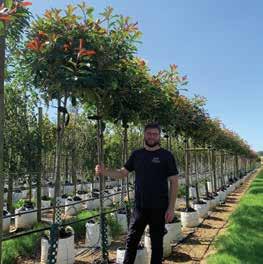

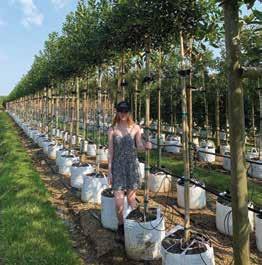
Screening doesn’t have to mean evergreen, or even a tree which is in leaf for a long period. Depending on your needs, sometimes the branches of a tree alone can provide a screen, or varieties with a more open crown can provide a dappled screen, detracting from what is beyond whilst still letting plenty of light into your garden.
Deciduous trees will also give you a wider pallet to select from. We have put together some suggestions, however all trees will offer screening to some extent as long as they are the right tree in the right place. You may only use your garden for a few months of the year, so why not select a tree with blossom interest, or gorgeous autumn colour.
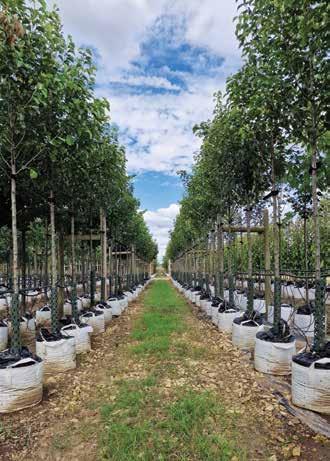
A sentence we often find ourselves saying in the Barcham office - this tree is usually the first tree into leaf in spring, and one of the last to lose its leaves in autumn. Whilst not evergreen, this does mean that it’s leaves will screen for a longer period of the year than most.
It produces a small and early white spring flower, followed by green and glossy foliage through summer. Should we get a cold snap in autumn/ winter this tree can also put on a great autumn foliar display. We have seen an array of colours on the nursery from red, to orange, to a bright yellow, all pretty in their own right.
It naturally grows in a conical to oval habit and is best left to achieve this without interference from pruning.
Hornbeam is often used for hedging purposes. When pruned and managed, it makes for a dense tree through the summer months, leaving a good branch structure when not in leaf. When maintained as a low-level hedge, some plants can hold onto their dead leaves through winter, however, we must stress this is not guaranteed and tends to occur less and less as trees mature, as they have no need to protect the new buds from predators.
The versatile species can be used to screen from ground level, above fence height, and also makes a great pleached tree if you would like a formal look for your garden.
Hawthorn are another common hedging candidate, seen in native hedgerows across the UK. The Paul’s Scarlet in particular has small leaves creating dense summer foliage cover. We usually offer this tree as a standard specimen with a clear stem and for screening, it is either best used as a singular tree where cover is needed most, or could be used in a row as a stilted hedge.
The double pink flowers which arrive in May will add some additional interest, however please be aware regular pruning will result in fewer flowers.
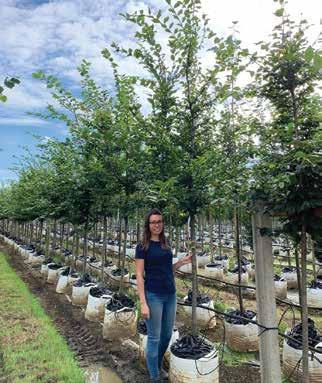
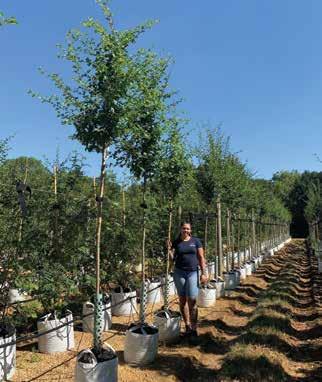
With so many trees to choose from, we have put together some of our top picks for garden planting. Whilst this is not an exhaustive list, and we understand gardens can vary considerably in size, and therefore available planting space, these selections are generally suitable for a small to medium sized garden.


A popular garden tree, the Robin Hill is the best Amelanchier if you are looking for a neat and shapely single stemmed tree. We enjoy watching the mature specimen outside our office bloom each spring, with a covering of small white flowers which open from pink buds.
The foliage emerges with a coppery tint, before turning to a light green through summer and finally to orangered in autumn before leaf fall.
The Susan is a smaller slower growing Magnolia making it great where space is limited.
Its deep cerise pink flowers are usually expected in April and each tree has plenty of them to admire.
Magnolias in general have a preference for free draining, slightly acidic soils and this pretty tree is no exception, however, it can also work on neutral to slightly alkaline.
BIRCH
One of the best things about birch trees is that even after leaf fall, their skeleton still adds a great deal of interest to the landscape. Birch are hardy trees and there are many varieties to pick from, so you can be sure there is one to meet your requirements. These are a couple of our favourites:
Fascination
Chinese Red Birch
This variety is a popular choice with our team. If you are looking for a tree with bark interest, with a smaller and slightly more compact growing habit, look no further.
The young trunk and branches are a reddish-brown but with every layer of bark that peels away, a lighter bark is revealed until eventually the trunk will be a brilliant white. The coloured bark is never completely lost however, with the younger branches within the canopy still holding true to the trees common name, ‘Red Birch’.
Catkins arrive to decorate the tree along with the foliage in the spring, and can often remain after leaf fall. The leaves are a little larger than many birch, and are green through summer changing to yellow in autumn.
Perhaps one of the most sought after birches, this variety, and its closely related Betula utilis types offer the whitest bark making them a popular choice for various planting sites. Planted en masse the pale white stems will stand out against the green of the landscape. This tree can mature to a medium size, reaching heights of around 10-15m in the right space.

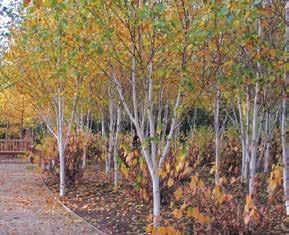
HAWTHORN
Don’t be put off by this common name, Hawthorn have plenty to offer both visually and ecologically. This is a great addition to extend flower interest after the cherry and crab apples have ceased.

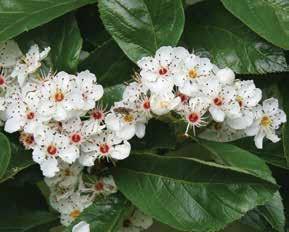
For many, Hawthorn may conjure images of rural hedgerows and is perhaps not thought of as the most ornamental specimen, however it is our opinion that this is wrong!
This tree has ovate leaves, accompanied by clusters of small white flowers in May which are a real hit with the bees. In addition, bright red berries are produced moving into autumn and if the weather is right, you will see the leaves turn from green to a glowing orange.
Maturity will see a small rounded tree, not likely to be more than 6m tall. The tree will also tolerate pruning; whether you are trying to achieve a neat manicured shape or just to ensure the tree does not get too large for your site.
The Crataegus x lavalleeii can be mistaken visually for an evergreen, with its dark glossy leaves. Like the afore mentioned variety, clusters of single white flowers are born in May. Against the dark leaves, the flowers and red berries that follow are all the more contrasting. In a mild autumn, the leaves can remain on the tree and have been known on occasion to stay until Christmas!
Crab apples are a good bet if you are looking for blossom. There are many cultivars to consider, usually with a white or pink flower, producing various sized fruit with additional interest from foliage and a range of shapes from rounded, to narrow, to semi-weeping.
A consistent performer, the Malus Rudolph is a pink flowering crab apple and one of our most popular.
The young spring foliage emerges tinged with red, before hardening to green as the summer progresses. The leaves are glossy and shine on a sunny day.
Whilst this is a crab apple, this is not one which is grown for its fruit as the apple produced is small, however this makes it a good choice where there is concern over any mess falling apples may bring.
The pretty white flower of this cultivar emerges from a pink bud, and against a clear blue sky, this is a force to be reckoned with.
The foliage is light green and ovate, forming an oval canopy for the tree as it matures.
The Malus Evereste produces a relatively large orange/ red fruit which remain on the tree through much of winter, unless picked, as this one can be used for jelly.



This crab apple offers some additional attributes above and beyond most. The leaves are trident shaped where most other varieties are ovate, and the foliage colour is purple throughout the season contrasting with the green in most of the landscape. In autumn it also turns a reddish-orange to boot.
Pink flowers emerge in spring along with the early foliage which makes for a colourful show.
This variety is best described as gently weeping so won’t get too tall at maturity.
ORNAMENTAL CHERRY
Known for their floral displays in Japan, there is plenty of choice with ornamental cherry trees with an array of different flowers from single white to a very showy double pink!

Although this is a pale pink, single flower, the Pandora still has that fluffy candy floss appearance when in full bloom, with an abundance of flowers born in spring. It has a smaller leaf that most cherry varieties which in some ways makes the tree less imposing through summer. These leaves are however capable of putting on a good autumn show when the conditions are right, turning orange-red before falling.
The Pandora has a more upright, compact growing habit so is a useful tree where canopy space is limited. Keep in mind ornamental cherries are best avoided close to buildings and paving.
If you are looking for pink blossom, the showy double pink flower of the Kanzan will not disappoint. The young spring foliage emerges a coppery-red colour at a similar time to the flowers emerging, before hardening to a green ready for summer.
In autumn, this foliage turns a vibrant orange before falling.
This Prunus is best planted with space for it to grow into as it creates a relatively large canopy at maturity, however the bigger the canopy, the more blossom!
Its all about the bark with this Prunus. Whilst many cherry varieties have some bark interest, this one is head and shoulders above the rest, with a rich mahogany peeling bark reminiscent of a birch.
This ornamental cherry does flower, however it appears in late spring and is far less abundant than most Prunus varieties.
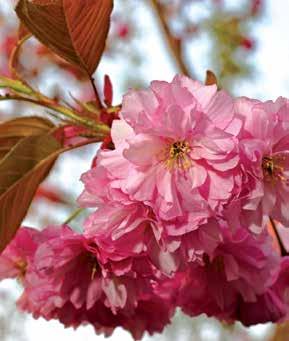
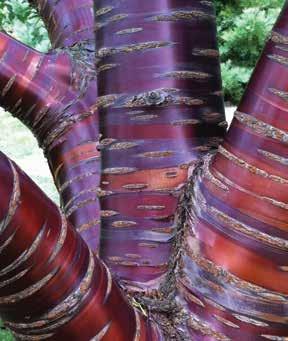


This delightful sweet gum has deep and distinct lobed leaves, that resemble those of Maple. Springtime brings bright, luscious foliage, but the real attraction begins in September. Autumn is when this tree really shows off its colours; it begins with yellow at the very top of the tree, turning to orange, red and then a deep claret colour before the leaves finally fall. What stands out from the rest, is that it displays these colours all at once!
This tree will thrive on most soils, but does favour well-drained, towards acidic. It is a fantastic choice for gardens and parks with it’s flattering pyramid structure.
This stunning cultivar has a fantastic display of contrasting foliage to bring your garden to life. New growth is bright crimson before transforming into a deep green as the growing season progresses.
If you experience drought in your area, this tree is a tough contender that can tolerate dry spells, as well as air pollution and soil compaction.
Like its parent, Acer campestre, the Louisa Red Shine is tolerant of most soil types, although it does do best in rich, well-drained soils.
As soon as you think of Magnolias, your mind races to beautiful, delicate flowers ranging from pure white to deep magenta. The Heaven Scent offers a light pink flower that sit across the tree like candles in early spring. Along with the glorious colour, these tulipshaped flowers have a sweet scent as they bloom.
A more upright growth habit whist young, this tree matures to have a roughly rounded canopy. It does best on moist, but free-draining, fertile soils and in a sheltered position.
We grow this Magnolia both as a single stemmed tree and multi-stem – both equally beautiful!
This Mountain Ash is certainly one of our prettiest native trees! There isn’t a dull moment with this tree; spring brings white flowers that then produce orange/ red berries by the time September arrives. These berries are thoroughly enjoyed by birds ahead of the cold snap.
We tend to stock this one as a multi-stem tree however we also have many cultivars available if you would prefer something with a single stem.
Sorbus aucuparia thrives on most free-draining soils but is not a lover of hard areas where reflected heat and light bouncing off windows can create too hot of an environment for it to thrive.

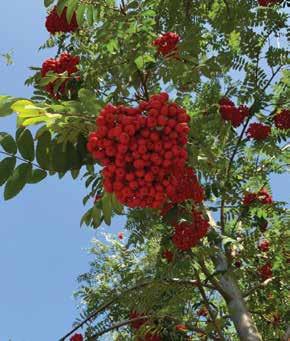
Often, trade customers and nurseries use stem girth to classify and sell trees which are a 6-8cm girth upwards. This measurement is the circumference of the stem, taken at 1m from ground level. Whilst we can advise you of the girth size of all of our trees, here at Barcham we have tried to unwrap this terminology for our retail customers in an effort to ensure you know what you will be receiving. Taking the tree height and container size we have created 4 main size categories. Please note some multi-stemmed trees and bushes are not categorised in this way.
This size is not commonly used anymore, but where it is, it will usually apply to multi-stemmed and feathered trees. See next page for a description of these forms.
Our most popular size, offering an instant impact without the necessity of machinery to manoeuvre and plant.
If you want something a little larger, but still possible to plant without machinery being essential, this is the largest size to consider.
It is advisable to use machinery to manoeuvre trees of this size, due to their weight.
Trees can be supplied in a number or different forms determined usually by how they have been pruned and trained on the nursery. These different forms can go by various names, the most common of which are in the following table.
Form
Multi-stemmed
Feathered
Half standard
Full standard
Pleached
Full panel pleached
Shape Description
A multi-stemmed tree should branch from ground level, with 3 or more defined stems. A true multi-stemmed tree is achieved by coppicing and should not be grown or sold as multiple trees in one container.
A feathered tree is where the branches from the main stem, start at ground level. There is no bare stem.
Half standard trees do have a small clear stem, which should be between 1m and 1.2m to be classed as such, their foliage starting at this height.
A full standard tree simply has a larger clear stem before the foliage starts, of 1.8m-2m. The majority of our trees are supplied in this form.
Pleached trees have been trained flat onto a bamboo frame and are commonly used for screening. Pleached tree dimensions can vary, but are often found with a clear stem of 1.8m.
A full panelled pleached tree refers to a tree trained onto a bamboo frame, with no clear stem. Essentially a ‘feathered’ tree which has been trained.
Here at Barcham our team have many years of experience and expertise.
If you are unable to visit the nursery we can still offer plenty of advice over the phone, by email, or via our instant chat service.
Often, one of the best ways we can help and advise, is to see photos of your planting area.

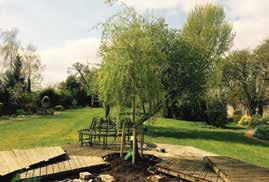
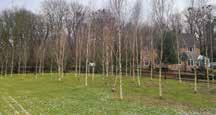
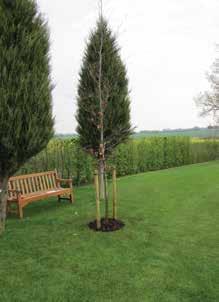
This is the next best thing to a site visit, giving us a good idea of the room which is available for planting, and therefore the size and variety of tree which will be suitable for you.
In addition, our website is updated with guides and advice, we hope with everything you could want to know!
If you are local, or even if you are not, our nursery is open Monday - Friday by appointment. We are a large working nursery and so you will be escorted around the site by one of our team, who can help make sure you get the most out of your visit. As well as viewing our tree stock, you can hand-select your trees which is especially useful where there are specific requirements. You will need to wear suitable footwear, and dress accordingly for the weather conditions. More information can be provided when booking.
The nursery covers over 180 acres and so visits are usually tailored to see a few specific species, as it would not be possible to cover all of our trees in one day! Depending on the time of year, you may be lucky enough to see the nursery in full bloom or even the trees in their autumn splendour. On a summers day, our reservoir is a serene place to stop by, and you are sure to see the nursery in full swing with our despatch and production team lifting, pruning, and carrying out maintenance across the nursery.
We are able to offer nursery tours for schools and groups with prior arrangement. These are usually conducted on foot. Please contact us for more information.
Office: 8:00 - 17:30
Nursery visits: 9:30 - 15:30
Please call us on 01353 720 950 to make an appointment with one of our team. Visiting hours may vary slightly during winter.
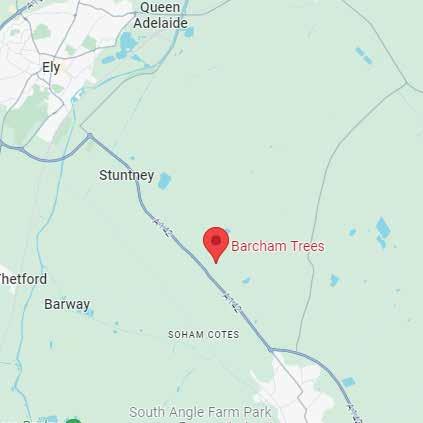
Barcham Trees
Eye Hill Drove Ely
Cambridgeshire
CB7 5XF
By car: We are situated just off the A142 between Soham and Ely.
By train: Ely is our closest train station, with the nursery a short 5-10 minute taxi ride from there.

Our team have many years of experience and expertise.
With so many different species and cultivars of trees out there on the market these days, choosing the right tree for the right space can be quite a daunting process. Being literally unable to see the wood for the trees! We are here to help you with this undertaking. Planting trees is a lifetime investment so it is imperative that you get this correct from the start.
Whether you are looking for screening trees to block out an unsightly view, pretty garden trees, an avenue or parkland trees for larger planting schemes or fruit trees for orchards, there is a good chance that we can help you find the perfect trees for your situation.
The key to a happy and healthy tree is making sure you have selected the correct species from the very beginning and I would be delighted to help you with your tree selection process.
I am a long-standing Sales Executive at Barcham Trees having been employed by the company for many years. I originate from a horticultural background working in several wholesale nurseries producing a wide variety of plants: from shrubs and trees to seasonal bedding, perennials and herbaceous. My tree and plant knowledge is extensive.
Passionate about trees, I believe that they are the backbone to any good landscaping scheme, big or small. They offer uniformity, structure, height, colour and seasonal interest; but most importantly trees benefit the natural world, environment and ecological balance. Trees and green spaces in general have a positive impact on human health and wellbeing - so, what’s not to love!
Here at Barcham Trees we offer a tailor-made, personal and friendly site visit and consultation service, specifically designed to cater for your tree planting needs. Conducting many of the visits myself, I will visit your property by appointment, to discuss your specifications and wishes, assess the site conditions, the soil type and all relevant aspects of the proposed planting area in detail. Once all the information is collated, I will produce a detailed and informative site plan, plotting the suggested trees as accurately as possible for your consideration, together with a formal quotation of the recommended tree species for your planting project. My promise to you is that we will provide you with the best advice, knowledge, and expertise, involving you every step of the way. Giving you a fulfilling and engaging experience from conception to realisation.
I look forward to accompanying you on your tree planting journey for present and future generations to come.
Jules Baird Sales Executive
The customer brief was to make the site look like New England.
The client was particularly interested in Canadian Maples for autumn colour, however sadly the site would not allow this type of planting due to the soil being neutral to alkaline pH.
This area was also prone to water logging in the lower lying parts. There was a stream that drains excess water, as the land naturally falls, towards the tree belt.
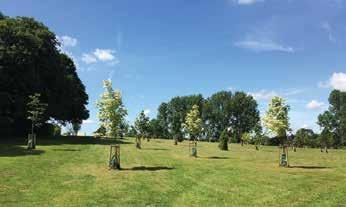

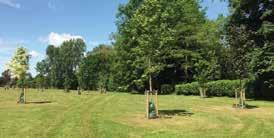
The overall result was a range of mixed species that would provide plenty of seasonal interest, benefiting the local bird and wildlife, being sustainable and diverse but sympathetic to the natural environment.
Call us on 01353 720950 to book a site consultation with Jules.
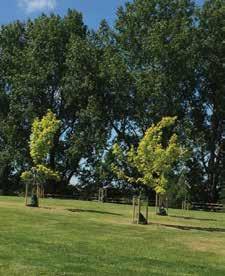
Here at Barcham we can also offer a range of sundries to help you with the planting and aftercare of your trees. Along with our trees, you can purchase any of our accessories online, through our website.
We are pleased to now offer a range of organic products to boost your trees natural defences and aid growth. We have worked closely with our agronomist to create the range exclusively for our customers to help you manage trees in your garden.

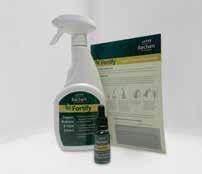

Natures Plant Armour
Sentinel is a unique blend of liquid silicon and plant extracts. This blend naturally strengthens plant cells and increases plant hair number and size to armour trees and plants and reduce susceptibility to insect feeding and disease infection. Regular use will support the healthy growth of all plant and tree species.
Nutrient & Plant Extract
Fortify is an organic blend of nutrients and plant extracts created to support plant health through periods of disease pressure, and limit susceptibility to infection.
Regular use will help keep trees and plants strong, healthy and looking vibrant.
Complete Nutritional Support
Invigorate is a concentrated liquid feed made to supply all essential nutritional requirements of trees and ornamental plant species.
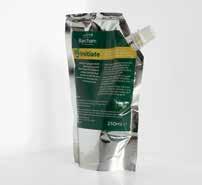
Naturally stimulates root growth and activity
Initiate is a highly effective organic root stimulant, soil conditioner and water retention aid made to give trees and plants the best start, from planting.

Slow release water for young trees
The Barcham hydration bag is zipped around the stem of the tree and can be used from the time of planting, or added in the spring to support the tree through its first two growing seasons, post planting.
This double skinned bag holds 75 litres of water, filled through an opening at the top. The bag will release water slowly over a period of 3-6 hours, ensuring the soil is saturated and therefore reducing the frequency of watering to once every 3-5 days depending on climate.

